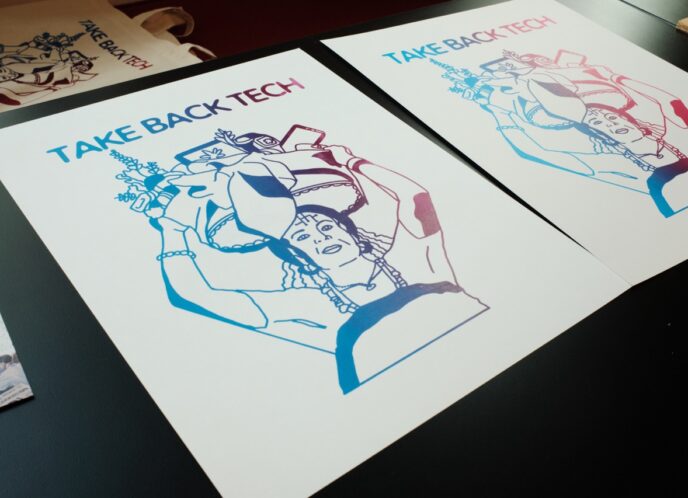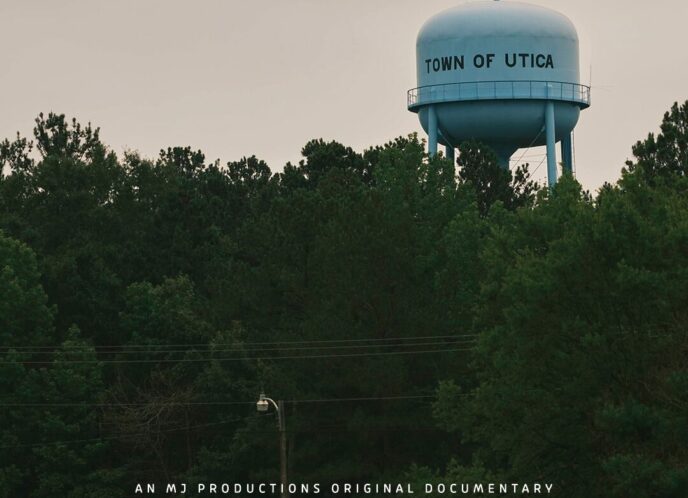By Favianna Rodriguez/ Reposted from Favianna.com
The imagery and posters of the Occupy movement are gaining more and more visibility in magazines, blogs, and design journals. I recently ran across an article in ImprintMagazine.com that highlighted the Occupy Wall Street Journal posters issue, a project that was facilitated by my artist friends Jessy Goldstein, Josh MacPhee and Molly Fair of JustSeeds.org.
Political posters are what most has defined my art making career. I was in my teens in the late 90's when I was started perusing through the political posters that had helped define the 60's and 70's. The demands on many of these posters still spoke to me as a young woman of color, even though they were almost 30 years old. I saw posters about labor rights, about corporate greed, about housing, about women and revolution, and about the right for everyone to participate in a democracy.
I was a young, student activist – daughter of immigrants – who had much to say about the world around me. And political posters became my medium of choice because they contained strong imagery, bold messages, and they could exist at many places in one time (street corners, bus stops, community centers).
Now, we are witnessing a renewed interest in political posters and that's thanks to Occupy and the identity of the 99%. The wave of graphics, imagery, and signage emerging from this movement are demonstrating the powerful role that culture plays in political change, political posters in particular.
History shows us that when social movements grow to national and international levels, they also are accompanied by a culture of resistance. In the case of Occupy, we are seeing the same concepts of collaboration and decentralization in the way that art is being produced. For example, free downloads of posters, and the use of Creative Commons. This is precisely the space in which political posters thrive, and that's why I love to make them!
Carol Wells, one of the most impactful mentors in my art-making, explains, "Protest posters flaunt their politics to generate controversy. Raw and aggressive or polished and sophisticated…Produced in multiples, often with urgency and any means available—offset, lithograph, silkscreen, linocut, stencil, woodcut, photocopy, or laser—few copies survive. Slapped on walls surreptitiously, often at great risk, by collectives and anonymous individuals or carefully fashioned by recognized artists in well-equipped studios, protest posters communicate instantly and directly."
I've put together A list of reasons why political posters are vital tools in social movements. Many of these bullets apply to culture overall, including music, the written word, comics, public theater, and more. It's my hope that this will inspire you to make your own poster.
-
Posters create a compelling vision of the society that we desire to live in: They challenge the status quo, and are often able to draw comparisons between the society we DO and DON'T want.
-
Posters are Fast: Posters should be read in about 5 seconds. They are designed for someone walking down the street, or for a teacher who wants to put it up in her classroom, or for a quick share online. Text on posters is common and perfectly acceptable, and therefore posters can share a demand, or a call to action. Posters are usually done pretty fast. There's not the same attachment one has to a painting, for example. They key is to get out there!
-
Posters are Simple: Posters are meant to be bold, clear and to the point. That's how we can measure their effectiveness. Posters need to be framed in simple terms – less is more. I usually shoot for 10 words or less. Posters can explain complex ideas and policies and make them clear and accessible to everyday people.
-
Posters are Versatile: Posters can inspire a person to action, or make someone cry, or make someone laugh. They can encourage a viewer to mobilize, or to take an action, or to contemplate an idea, or even to get angry.
-
Posters Encourage Participation: Posters are meant for mass audiences. Their messages often are a a call for a collective identity, whether its around a shared worker identity, a shared Black identity, or in this case, a shared identity around the stories, demands and desires of the 99%.
- Posters can exist in many places at once: This is true whether its printed, or only exists onlne, or both. A poster is something meant to be shared, pasted on a wall, used as a picket sign, or even a Facebook profile. For many other works of art, the mass distribution of the piece in its original form would likely lessen its value, but not for posters. You want that image to "go viral."
If this is inspiring, you can click here to download out this step-by-step guide that Josh MacPhee and I wrote called Design for Social Change, originally published in the book Reproduce & Revolt.
You can also visit Occupy Design to browse some Design Guidelines by clicking here.
– – –
Credits for Images in this Blog
World Vs. 1% is by Favianna Rodriguez (me), and can be downloaded here.
Foreclose on the 1% is by Melanie Cervantes & Jesus Barraza of Dignidad Rebelde, and can be downloaded here.
We Are Many is by Ruben Ochoa in Mexico, and can be downloaded here.



